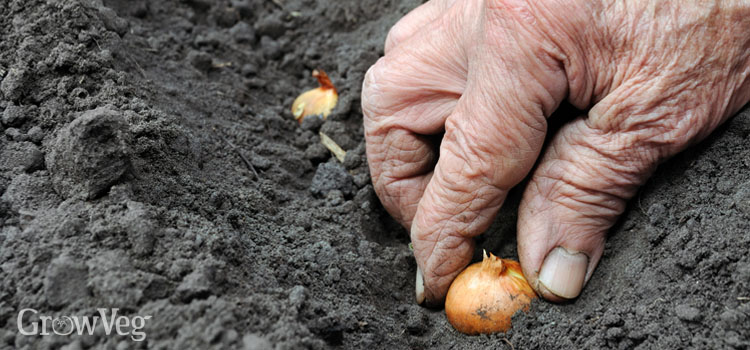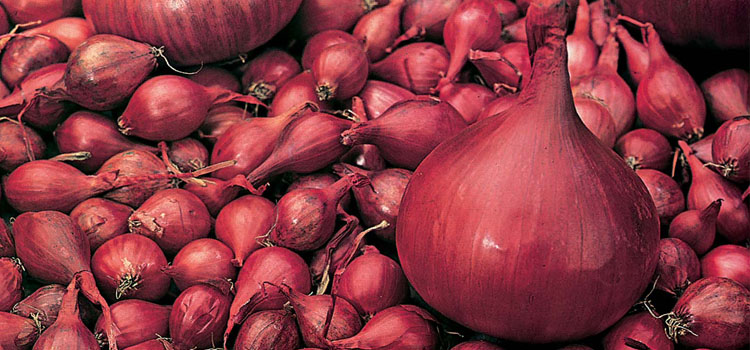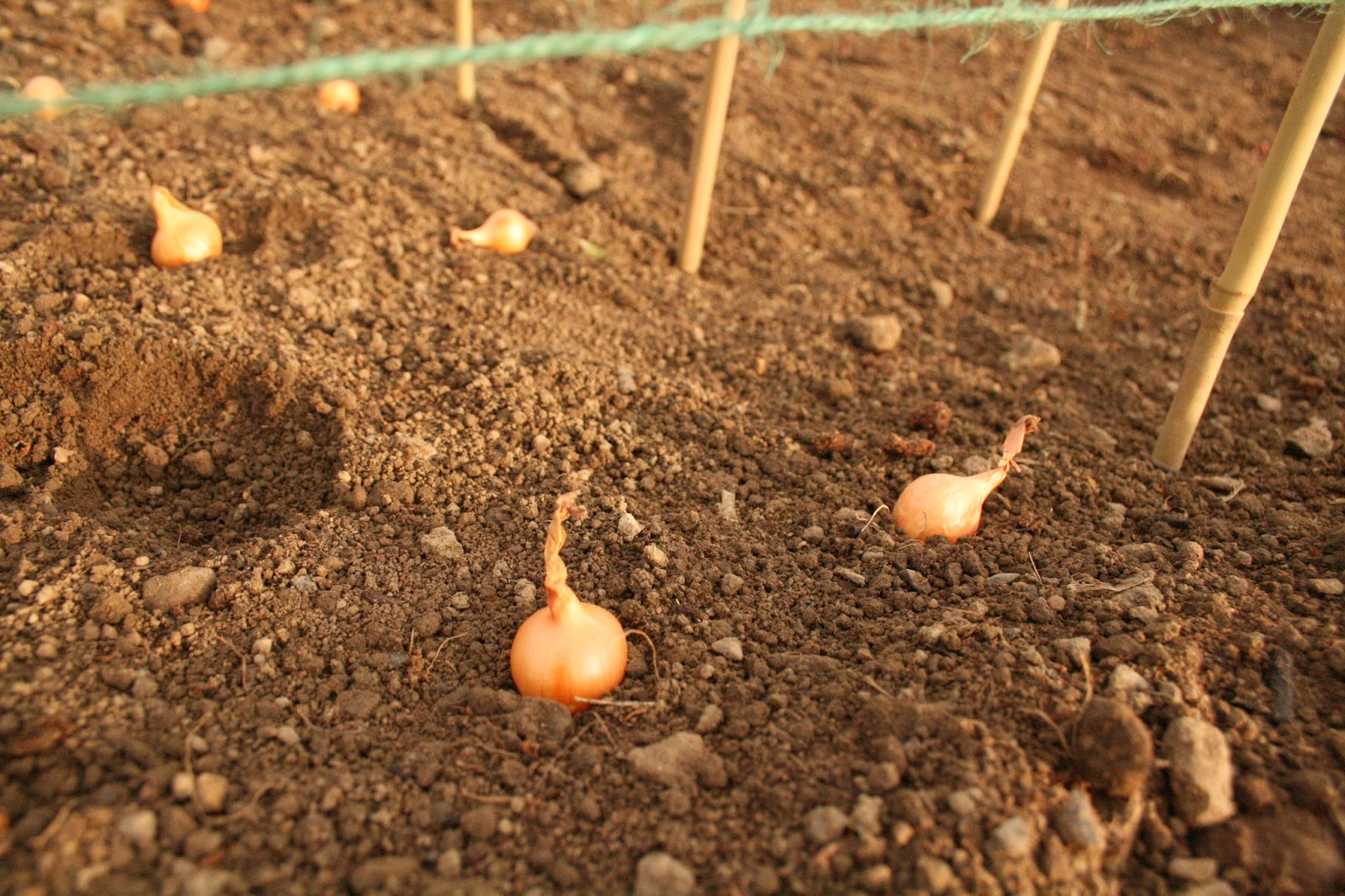Today’s onions are grown just about anywhere it rains – i. e. in most places! They’re definitely high on my list of must-have crops because they’re almost always a reliable staple. Onions will also do their thing for you if you can find a spot on the plot that gets lots of sun and has rich, free-draining soil.
Onions are a cool weather crop that can be planted in fall or early spring for harvest through winter. Getting the timing right for planting onion sets in autumn is key to growing large, healthy bulbs. Follow some simple guidelines on when and how to plant, and you’ll be harvesting bountiful onions while your garden is dormant.
Why Onions are an Ideal Fall Crop
Onions form bulbs when daylight length shortens in late summer and autumn. Planting sets mid-fall allows enough time for roots to establish before winter so bulbs can swell rapidly in spring as days start to lengthen again. The result is large, juicy onions ready for harvest before summer heat causes them to bolt.
Other advantages of autumn planted onion sets
- Mild temperatures are perfect for seedling growth.
- Less weed pressure compared to spring.
- Avoid insect pests like onion maggot flies that plague spring plantings.
- Gain extra growing time compared to spring planted sets.
- Extend your harvest season by planting different varieties with different maturity rates.
When to Get Onion Sets in the Ground
Timing for planting onion sets in fall depends on your climate:
- In warm zones (zones 8-10), plant September through November.
- In cool zones (zones 3-7), plant October through early December.
- In very cold zones (zones 1-2), plant in November right before the ground freezes. Mulch heavily after planting.
The most important factor is soil temperature. Bulbs won’t sprout until soils reach at least 55°F. However, cool soil slows growth, so it’s better to plant when soils are still warm – around 60-70°F.
Seedlings need 4-6 weeks of active growth before hard frosts to establish roots. Avoid planting too late when ground is frozen for long periods.
Preparing for Planting
Take these steps when prepping your planting area:
- Choose a sunny spot. Full sun is ideal.
- Prepare raised beds. Excellent drainage is key. Beds warm quicker in spring too.
- Mix in compost. This provides nutrients and improves soil texture.
- Rake soil smooth. Create a fine seedbed for good seed-to-soil contact.
- Space rows 12-18 inches apart for upright varieties. Allow 9-12 inches between rows for smaller, bulb types.
- Consider mulching. Organic mulches insulate soil and deter weeds.
How to Plant Onion Sets
Planting onion sets takes just a few simple steps:
- Push sets 1-2 inches deep into soil. Deeper if planting larger sets.
- Space 3-6 inches apart depending on bulb size desired. Crowding reduces bulb size.
- Arrange in straight rows. Makes tending and harvesting easier.
- Cover lightly with soil. Gently firm soil around bulbs with hands.
- Water thoroughly after planting. Keep soil moist, not saturated, while sprouting.
- Consider protective covers. These shields seedlings from extreme cold and heavy rain.
Caring for Onions Over Winter
Proper care while seedlings establish and over winter is important:
- Weed regularly. Onions compete poorly with weeds when young.
- Water sparingly. Avoid overwatering that causes rotting.
- Watch for insect pests. Use row covers to keep out onion maggots.
- Fertilize in spring just as bulbs start swelling. Use a balanced organic fertilizer.
- Mulch in very cold climates. Straw or leaves insulate plants during frosts if no snow cover.
- Renew protective covers as needed. Maintain ventilation to avoid diseases.
Harvesting Onion Sets
Time from planting onion sets to harvesting bulbs is 4-6 months. Pick when tops flop over and start drying out:
- Loosen bulbs with a fork. Avoid bruising delicate outer skins.
- Pull up plants or uproot gently. Allow sets to dry out of soil for 2-3 days.
- Cure bulbs for 2 weeks. Keep in a warm, dry spot out of direct sunlight.
- Trim off dried tops and roots. Leaving some stem intact.
- Store cured bulbs. Choose a cool (32-40°F), very dry spot. They will last 2-3 months.
Stagger planting dates to have a continuous supply. Enjoy green onions thinned from rows as you wait for mature bulbs.
Choosing the Best Onion Varieties
Look for long-day or intermediate day onions suited for fall planting:
- Yellow,Spanish, or white types store well into winter.
- Red and purple onions add color but don’t keep as long.
- Mini/cocktail onions are perfect for pickling.
- Evergreen hardy bunching onions provide a perennial harvest.
Experiment with different types to find your favorites for flavor and performance through winter.
Troubleshooting Common Onion Problems
Follow these organic solutions if your onion sets run into issues:
- Poor germination – Plant deeper, tamp down firmly, and keep soil moist.
- Not forming bulbs – Add more nitrogen and make sure to use long-day varieties.
- Flowering pre-maturely – Plant at correct spacing, control weeds, and use intermediate day varieties.
- Rotting bulbs – Improve drainage and avoid overwatering.
With the right planting time and care, you can grow sweet fall onions with very little effort. Getting onion sets in the ground during that ideal autumn window ensures you have a bountiful winter harvest.
Plants Related to this Article
If you need help designing your vegetable garden, try our Vegetable Garden Planner.
Set to it with Onion Sets
You can grow onions from seeds, but it’s much easier to start them from “sets,” which are small bulbs. Sets are just young onions that have been grown commercially and then dried to stop their growth before being sold to people like you and me. The tiny bulbs are usually no more than 2cm (1in) wide, and they are guaranteed to be virus-free, so you know you’re getting a reliable, happy product. Plant sets, and you won’t have to deal with strange germination—my springtime sets got a 99 five percent success rate (yes, one of the 2020 plants I stubbornly planted failed to sprout, denying me the satisfaction of a perfect strike rate).
Even though it might seem like spring is the best time to start growing onions, fall is also a good time. When planted at this time of year, the tiny bulbs quickly set roots and get ready for winter, when they will be ready to take off even earlier in the spring. Autumn-planted sets can yield their pungent haul by early summer, often a full month earlier than spring-planted sets. If you’re an onion obsessive like me you’ll appreciate that this is very good news indeed.

Fall-planted sets follow seamlessly on from summer crops. Plant potatoes here if you grew potatoes this season. The soil will have been well prepared for this crop and should be mostly free of weeds. Just a week before you plate, rake in some all-purpose fertilizer to give the soil extra nutrients. Growmore or blood, fish, and bone works great. If it’s been very dry where you are, soak the ground really well. You want to get the sets going as soon as possible.
Onions prefer quite a firm soil, which is where a rather eccentric cultivation technique comes into play. Just before planting, shuffle up and down the onion bed, taking baby steps to push down the soil. Some people might find this step (or steps) in the process strange, but it is necessary to make sure that the soil’s crumb structure is packed down so that the roots have the support they need.
Plant your sets about 2 cm (1 in) deep, so that only the very top of each one sticks out of the ground. Space each one 7-10cm (3-4in) apart in rows 30cm (12in) distant. Birds often eat the papery tips thinking they are tasty treats, pulling up the sets as they try to catch what they think is a juicy worm. One way to avoid set tips is to carefully cut them off down to the shoulder of the miniature bulb before planting. Set tips are just the old leaves of an immature plant. Once your sets are in place, keep the ground clean by pulling weeds by hand so that you don’t hurt or uproot the potatoes.
Extreme cold will kill off overwintering sets. This is a shame because it means that only people who live in milder climates can plant in the fall. People in USDA zones five and below will have to wait until spring to plant the usual way, when the soil is ready to work with. Also, British gardeners have a lot of options when it comes to sets for planting in the fall. In North America, on the other hand, people don’t have as many options, but you can often find young seedlings for sale instead.

Not all onions are suitable for fall planting, either, so be guided by the variety’s description. “Electric,” a beautiful red onion with flesh that is almost pink, and “Senshyu Yellow,” a Japanese type with a slightly flattened shape, are two of my favorites. Of course, there are plenty more out there. Putting something into the ground to get ready for next year’s harvest is fun to do while everything else is closing down for the winter.
How to Grow Onions from Seed and From Transplants… In Fall.
FAQ
When should I plant fall onions?
Can you plant onion sets too early?
How late in the season can you plant onions?
Should you plant onions in autumn?
The checklist below will help you decide if autumn planting onions are a crop you want to grow in your garden: Buy the onion sets in September for planting in late September to late October. Seeds are available but the procedure if much more drawn out and sets definitely work best at this time of year.
How do you grow autumn onions from sets?
Follow our guide to growing autumn onions from sets. How to plant onion sets – preparing the soil. Prepare the soil well by removing weeds and raking level. Add a slow-release fertiliser if necessary. Use your trowel or hoe to make a drill that is deep enough to sit the onion sets, with just the papery tops above the surface.
When to plant onion sets?
It is best to wait until the danger of frost is completely gone, even though the sets are more likely to survive a frost. Onion seeds germinate at 40°F. The optimum soil temperature is between 65°F and 75°F. Knowing when to plant onion sets is only half of the knowledge needed to be successful.
When do you plant onion bulbs in NYC?
Onion sets are planted about 4-6 weeks prior to freezing temperatures. This gives the bulb some time to sprout before a long winter dormancy. In NYC, hardiness zone 7b, we plant our onion sets in mid to late October. Bonus: Looking for more Fall/Winter gardening tips? Make sure to plant cover crops in your garden too!
- The Ultimate Guide to Growing Strawberries in Raised Beds - August 8, 2025
- No-Dig Garden Beds: The Easiest Way to Grow a Beautiful Garden - August 6, 2025
- How to Protect and Preserve Wood for Raised Garden Beds - August 6, 2025

